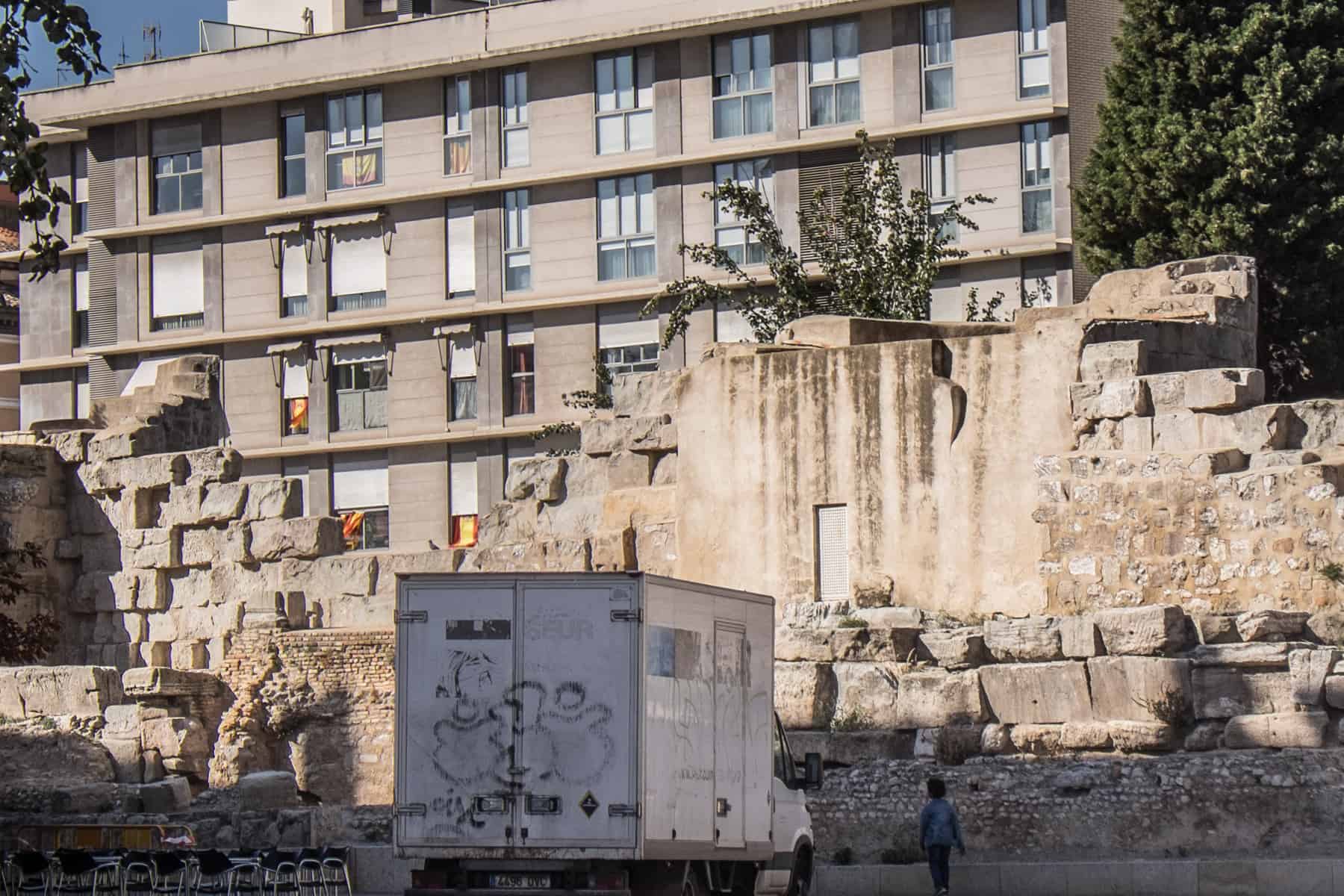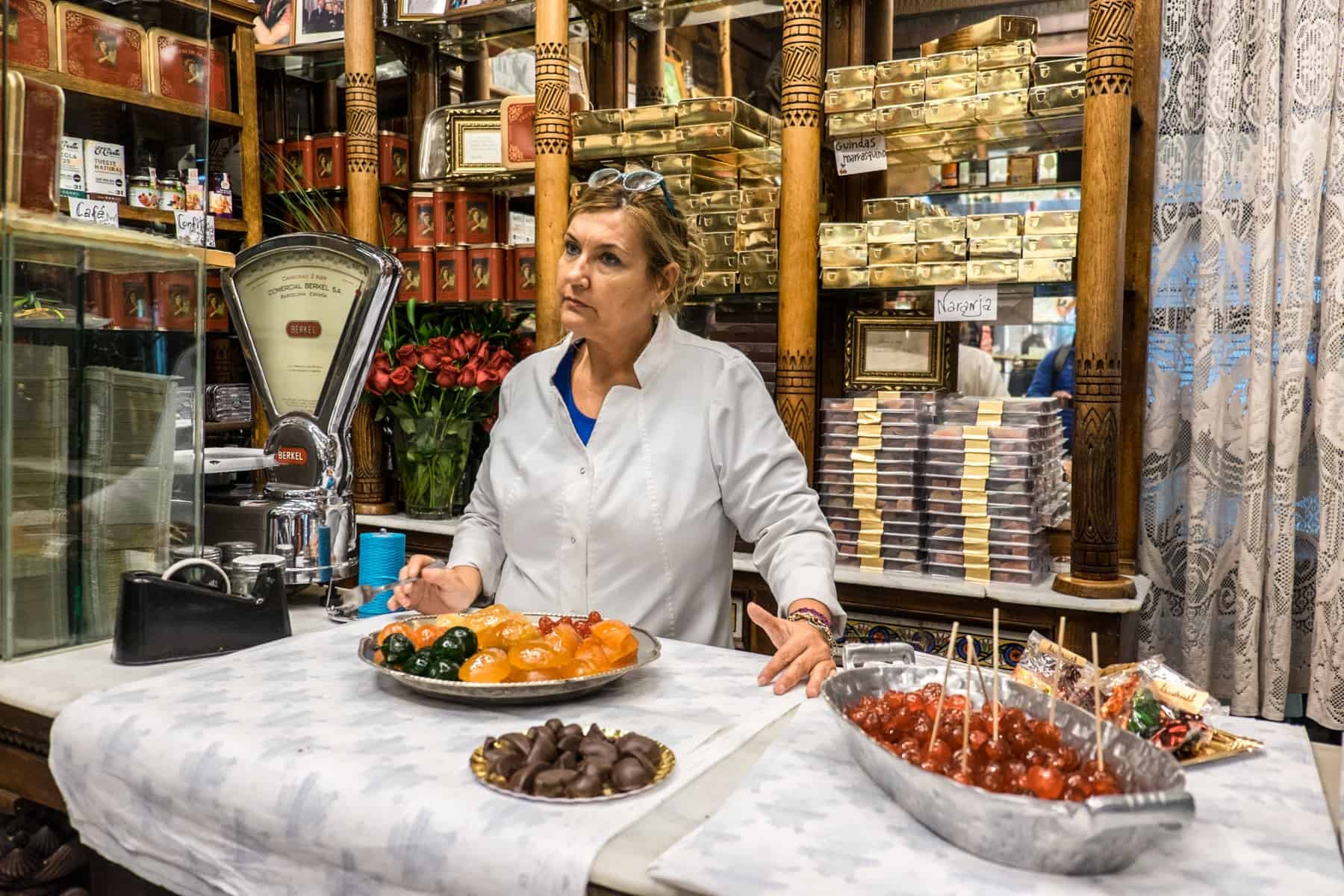Disclaimer: This post contains affiliate links to handpicked partners, including tours, gear and booking sites. If you click through or buy something via one of them, I may receive a small commission. This is at no extra cost to you and allows this site to keep running.
Wedged between Madrid and Barcelona is a city with an artistic legacy often overlooked. Here are all the things to do in Zaragoza city – the capital of mighty Aragon.
Zaragoza melds modern-day gritty and urban revival with its ancient and opulent architectural design heritage. The entire city is a showcase of its historical lineage of art and expression. And when travellers bypass the chance to visit Zaragoza on their journey between Madrid and Barcelona, they miss out on one of Spain’s most artistic and underrated cities.
Here’s why you should schedule the extra stop when travelling the popular Spain train route and experience what it feels like to stumble upon a Spanish secret.

The Art of Travel in Zaragoza, Spain – A Guide to World Heritage, Legacy and Urban Revival.
Contents
- All the Things to Do in Zaragoza
- Visit Aljafería Palace – UNESCO World Heritage Zaragoza
- See More Mudejar Art in the City
- Climb the Cathedral-Basilica of Our Lady of the Pillar
- Wander Plaza del Pilar – Spain’s Largest Square
- Find Remnants of Roman Zaragoza
- Take a Walking Tour of Zaragoza Street Art
- Go to the Otherworldly Zaragoza Expo Zone
- Visit the Goya Museum – The Artistic Son of Zaragoza
- Eat Your Way Through Zaragoza
- Food Workshops in Zaragoza – The Art of Cuisine
- Things to Know About Travel to Zaragoza
All the Things to Do in Zaragoza
Ready for a centuries-long journey into Zaragoza’s artistic heritage? Here’s where to start.
Visit Aljafería Palace – UNESCO World Heritage Zaragoza
Native to Aragon, Mudejar art blends Islamic and Christian elements from a time during the 12th and 17th centuries when both faiths coexisted. A core part of Zaragoza’s architectural heritage, the sheer amount of Mudejar art earned it a UNESCO World Heritage title, with the Aljafería Palace being the most symbolic.
This 11th-century medieval Islamic palace remains one of the most beautiful and significant of all the sights in the city and the seat of the regional parliament. It’s an open museum of the residential structures of the Taifa kingdoms.

The castle-like Aljafería Palace in Zaragoza.
By 1118, Aljafería became a Christian Palace and the residence of Aragonese monarchs, who added extra layers and extensions to the existing design, as did the Catholic monarchs with the Throne Room in 1492.
Modernisation into the fortress style we see today came in 1593. Each room is like a puzzle piece of this architectural timeline, and while it draws the crowds, it’s a place where you can easily get lost in its detail, most notably in one of the main halls with these mesmerising archways.
BOOK: A two-hour guided tour of Aljafería Palace, with skip-the-line entry.

The exquisite Mudejar art inside Aljafería Palace
See More Mudejar Art in the City
Beyond Ajafería Palace, you can still find Mudejar art details on historic structures around the city.
See how Zaragoza’s Roman past is interlaced with Mudejar art at the Lonja Market. Or find the Parish Church of San Gil Abad – a Romanesque temple destroyed in the 14th century to make way for the still-standing Mudejar church.
El Salvador Cathedral was built upon the site and structure of the main mosque of the old Muslim city. Today, Mudejar design can be found on the outer wall of the parish chapel, and the Church of Mary Magdalen is Mudejar in style with a tower and intricately patterned tiles.

Mudejar art on the Church of Mary Magdalen in Zaragoza.
Climb the Cathedral-Basilica of Our Lady of the Pillar
One of the defining features of Zaragoza is the stunning Cathedral-Basilica of Our Lady of the Pillar – a Roman Catholic Church in the heart of the Plaza del Pilar (the largest of all in Spain).
It provides one of the best-elevated views over the multi-domed dreamscape and a better perspective on the artistic Plaza del Pilar and its water features.

The Cathedral-Basilica of Our Lady of the Pillar lines the Plaza del Pilar.

One of the best views of Zaragoza city from the top of the Cathedral-Basilica of Our Lady of the Pillar.
Wander Plaza del Pilar – Spain’s Largest Square
Plaza del Pilar is where you will find another of Zaragoza’s famed public artworks. Controversial but central to Aragon’s history, the Fuente de la Hispanidad fountain is shaped like the continent of Latin America. A reference to Columbus – amongst other symbols in the city – who monarch Ferdinand II of Aragon commissioned for the ‘discovery of the New World’.

Elevated view to the Fuente de la Hispanidad water fountain shaped like Latin America.
Find Remnants of Roman Zaragoza
Zaragoza’s 2000-year-old Roman legacy is primarily found in the many archaeological museums, preserving a prominent layer of the city’s design.
Like most Roman cities, modern structures have covered many ancient remains, and Zaragoza is no exception. The construction of the San Pablo church replaced the old Roman hermitage of San Blas.
Still, there’s a lot of Roman Zaragoza on show. The Caesaraugusta Theatre Museum (Museo Del Teatro De Caesaraugusta) is one of the largest theatres of Roman Hispania that once held 6,000 spectators, and you can view ruins from a market at the Caesar Augustus Forum Museum.
Even an 80-metre long section of the old Roman city walls stands crumbling in front of a modern apartment building.

Remains of the Roman wall in Zaragoza city.
Take a Walking Tour of Zaragoza Street Art
We were able to wander beyond the opulent centre of Zaragoza, where there is an interesting contrast in its abundance of street art. It’s all a part of an annual urban regeneration drive, Festival Asalto (the International Festival of Urban Art), bringing an artistic new life to forgotten neighbourhoods.
Since its inception in 2005, the city has been filled with over 70 artworks using murals, graffiti, templates, posters and installations as the medium of expression by local artists and groups. You can embark on a self-guided walking tour to find them all using the handy online map (a printed version is also available).

Street art in Zaragoza is helping to revive forgotten neighbourhoods.

Street art in Zaragoza is reviving once run-down streets.

Zaragoza’s street art collection includes a Flamenco dancer on a building in a neighbourhood sports court.

Detailed artworks on tall apartment blocks in Zaragoza – part of the urban regeneration drive, of Festival Asalto
Go to the Otherworldly Zaragoza Expo Zone
Space age-like modern architecture adds to the multi-layers of artistry here, which you can see showcased at the Zaragoza Expo Zone, constructed in 2008.
My two favourite designs are the Alma del Ebro sculpture outside the Congress Palace, which was made especially for this International Exhibition by Spanish sculptor Jaume Plensa and the Bridge Pavilion designed by British-Iraqi architect Zaha Hadid.

The Alma del Ebro sculpture at Zaragoza Expo Zone
Visit the Goya Museum – The Artistic Son of Zaragoza
In the home of Goya, it’s no wonder that art plays a central role in the city’s persona. The dedicated Goya Museum (housed within the 16th-century Renaissance building, Calle Espoz y Mina 25) showcases works from the 15th to 20th century, with rooms dedicated to Goya’s self-portraits and etchings – the only museum which has the entire six series on display.

The modern Goya Museum in Zaragoza, creating a spotlight of his works.
Eat Your Way Through Zaragoza
Zaragoza is synonymous with gastronomic, cultural expression. Much like art, people reinvent old recipes and add modern twists to traditional establishments and food customs. So where’s the best place to eat in Zaragoza?
Zaragoza’s restaurants and culinary establishments pride themselves on local produce. The love for tapas lines every corner and alley, such as the El Tubo district, known for attracting hungry crowds and Plaza de Santa Marta for café culture.

A typical side street in Zaragoza’s El Tubo district is filled with the best places to eat and drink.

Zaragoza’s cafe culture in Plaza de Santa Marta.

La Despensa de Montal restaurant in Zaragoza.
Food Workshops in Zaragoza – The Art of Cuisine
Mixing old and new with artistic flair is very much a part of the food scene in Zaragoza. Here’s where you can sample the best of tradition.
- Attend a tapas workshop at the modern gastronomic space La Zarola, helping to cook up half a dozen dishes. It’s like being at the house of a friend.
- Book a three-hour evening Tapas bar-hopping tour and indulge in the best culinary spots in the city.
- Enjoy a masterclass of Jamon carving by Félix Martínez, who owns the award-winning restaurant La Jamoneria. You’ll be taught how to carve Jamon while sampling perfected slivers of Jamon alongside a tapas and wine menu.
- Indulge in candied fruits and chocolates at the vintage 1856 confectionary shop, Fantoba. Its old wooden shelves stacked floor to ceiling with boxes, bottles and old trinkets takes you back to that time.

Part of the neverending indulgence of the Tapas Workshop at La Zarola.

The master at work. Jamon carving by Félix Martínez at his restaurant, La Jamoneria.

Zaragoza’s oldest sweet shop, Fantoba, opened in Zaragoza in 1856.
Things to Know About Travel to Zaragoza
Ready to see Zaragoza? Here are some handy tips about getting around and helpful on-the-ground travel hacks.
How to Get to Zaragoza – Book a Renfe Train
Tarragona to Zaragoza is one hour and 30-minute journey on the train, landing you right between Madrid and Barcelona. Zaragoza is 90 minutes from Madrid by train and just under two hours from Barcelona.
I have a whole Spain rail AVE guide, with suggested routes and top tips for travelling around the country, but here are some quick-fix tips for planning your rail adventure.
- You can book standard and specific high-speed network tickets via the Renfe website, which is available in English. All tickets must be pre-booked (payable by Visa, Mastercard and Paypal), since you can’t turn up on the day and book at the station.
- The AVE trains have nine classes if you count the overnight trains with sleeper/bed options, but there are two main ones to consider – Turista (a second class option with 2 x 2 seating rows) and Turista Plus, which is a little more spacious (with 2 x 1 seating rows). I travelled to each destination with a Turista ticket – comfortable and great value for money.
- If you want to book a multi-stop trip, consider getting a ‘Spain Pass’, so you can travel using just one ticket for the AVE and other long-distance trains. You must reserve a seat before every trip, as limited space is assigned for Spain Pass holders.

The ticket check before boarding a Renfe train in Spain.
Zaragoza City Card
If you are looking to visit many museums and monuments and make use of public transport, consider getting the Zaragoza Card. From €20 for 24 hours or €23 for 48 hours, you’ll have access to all major sites, buses, and tram lines, and discounts for listed shops and restaurants.
Where to Stay in Zaragoza
You can stay in the old town for under €100 a night, especially in shoulder seasons, including the rustic-elegant Hotel Avenida and minimalist-stylish Hotel Inca. Ebro riverside properties like the four-star NH Ciudad de Zaragoza are mid-budget, lux options.

The beauty of visiting Zaragoza city.


Leave a Reply